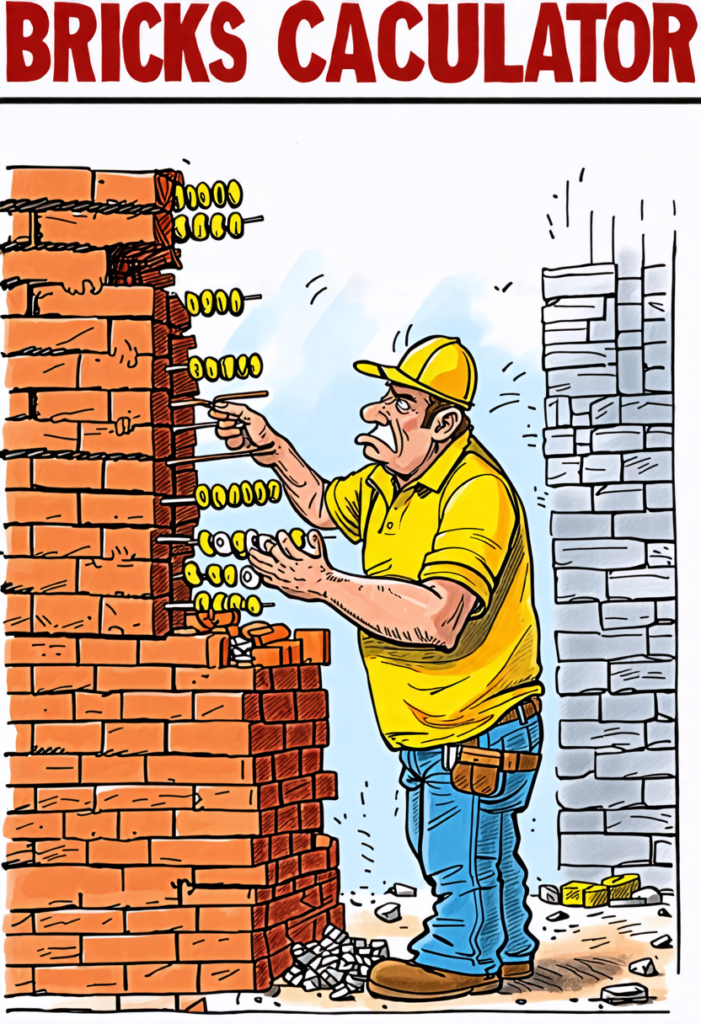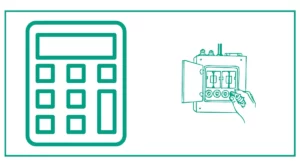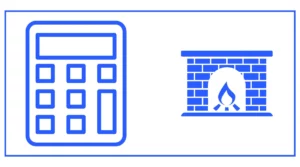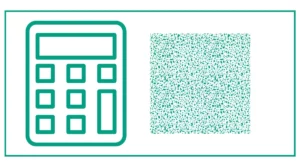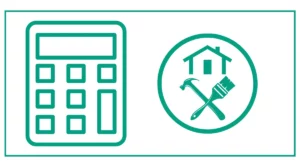Bricks Calculator
This brick calculator can help you calculate the total number of bricks needed for your construction project.
Enter the brick length, height, width, mortar join thickness, wall length, height, area, type of wall, and expected brick wastage.
The calculator will calculate the number of bricks needed for your wall and the total number of bricks you need to buy.
The brick wastage is usually 5%.
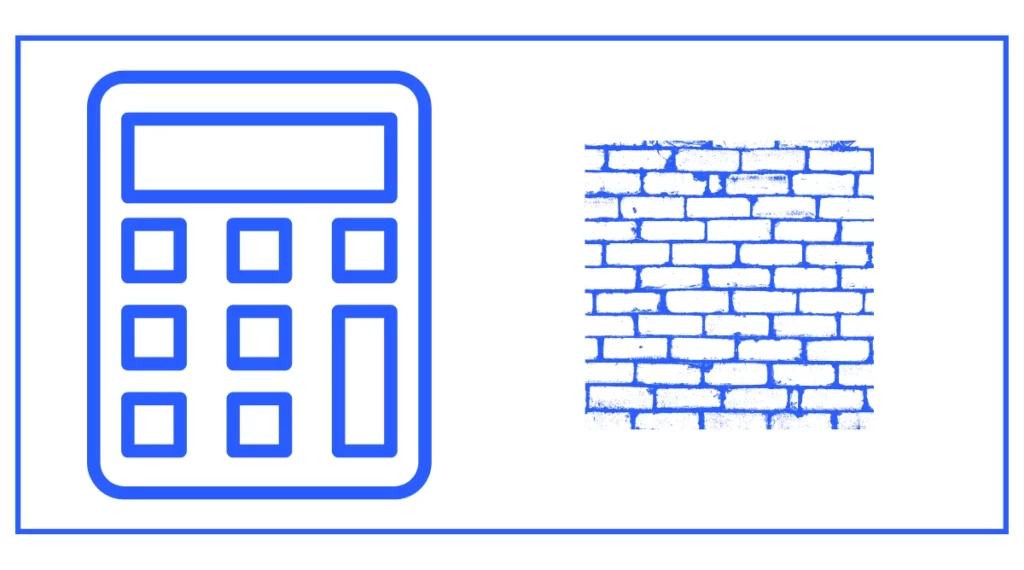
You can also find out how much sand you need.
Why Use a Brick Calculator?
Estimating the number of bricks needed for a project is more complex than it might seem at first glance. Several factors come into play, including the dimensions of the bricks, the size of the mortar joints, and the overall dimensions of the wall. A brick calculator takes these variables into account, providing a more accurate estimate than simple guesswork.
Using a brick calculator offers several benefits:
- Accurate material estimation
- Cost-effective planning
- Reduced waste
- Time-saving in the planning phase
- Improved project management
How to Calculate How Many Bricks You Need
To calculate the number of bricks you need, follow these steps:
- Measure the wall: Determine the length and height of the wall in meters.
- Know your brick dimensions: Measure the length, width, and height of a single brick in millimeters.
- Account for mortar joints: Decide on the thickness of your mortar joints.
- Use the brick calculator: Input these measurements into the calculator.
- Consider wastage: Add a percentage for potential breakage or cuts.
Understanding Brick Sizes and Mortar Joints
Brick sizes can vary depending on the type and manufacturer. Common brick sizes include:
- Standard brick: 215 mm x 102.5 mm x 65 mm
- Modular brick: 190 mm x 90 mm x 57 mm
- Engineer brick: 215 mm x 102.5 mm x 65 mm
Mortar joint thickness typically ranges from 10 mm to 15 mm. The choice of mortar joint thickness can affect the overall look of the wall and the number of bricks required.
Calculating the Number of Bricks Needed
To manually calculate the number of bricks needed, use this formula:
Number of bricks = (Wall area) / (Brick face area + Mortar area)Where:
- Wall area = Wall length x Wall height
- Brick face area = (Brick length + Mortar thickness) x (Brick height + Mortar thickness)
For example, if you have a wall that is 5 meters long and 2.5 meters high, using standard bricks (215 mm x 102.5 mm x 65 mm) with 10 mm mortar joints:
- Wall area = 5 m x 2.5 m = 12.5 m²
- Brick face area = (0.215 m + 0.01 m) x (0.065 m + 0.01 m) = 0.0225 m² x 0.075 m = 0.0016875 m²
- Number of bricks = 12.5 m² / 0.0016875 m² ≈ 7407 bricks
Factors Affecting Brick Calculations
Several factors can influence the number of bricks needed for a project:
- Wall type: Single or double brick wall
- Openings: Windows and doors reduce the number of bricks required
- Brick pattern: Different patterns may require more or fewer bricks
- Wastage: Account for breakage and cuts (typically 5-10%)
Using the Brick Calculator Tool
Our brick calculator simplifies the process of estimating how many bricks you need. Here’s how to use it:
- Enter the brick dimensions (length, height, width) in millimeters
- Input the mortar joint thickness in millimeters
- Provide the wall length and height in meters
- Select the wall type (single or double)
- Set the brick wastage percentage
- Click “Calculate” to get your results
The calculator will display the number of bricks needed and the total number of bricks including wastage.
Estimating Mortar Needs
In addition to calculating the number of bricks, it’s important to estimate the amount of mortar needed. A mortar calculator can help with this. Generally, you’ll need about 0.02 to 0.03 cubic meters of mortar per square meter of wall area for a single brick wall.
To calculate mortar volume:
- Determine the total joint volume (length x width x depth of all joints)
- Add 10% for wastage
- Multiply by 1.33 to account for water content
Tips for Accurate Brick Estimation
- Always measure twice to ensure accuracy
- Consider the brick bond pattern, as some require more bricks than others
- Account for openings like windows and doors in your calculations
- Add extra bricks for wastage and potential mistakes
- Consult with a professional for large or complex projects
Common Mistakes in Brick Calculations
- Forgetting to account for mortar joints
- Overlooking wastage in the estimation
- Not considering the wall type (single vs. double)
- Ignoring openings in the wall
- Using incorrect brick dimensions
Brick Calculator vs. Manual Calculation
While manual calculations can be done, using a brick calculator offers several advantages:
- Speed: Calculations are done instantly
- Accuracy: Reduces the risk of human error
- Flexibility: Easily adjust inputs for different scenarios
- Consistency: Provides reliable results every time
Additional Considerations for Brick Projects
When planning a brick project, consider these factors:
- Brick type: Different bricks have varying strengths and appearances
- Mortar mix: The right mortar is crucial for durability
- Wall ties: Necessary for structural integrity in cavity walls
- Insulation: Consider thermal requirements for exterior walls
- Local building codes: Ensure compliance with regulations
